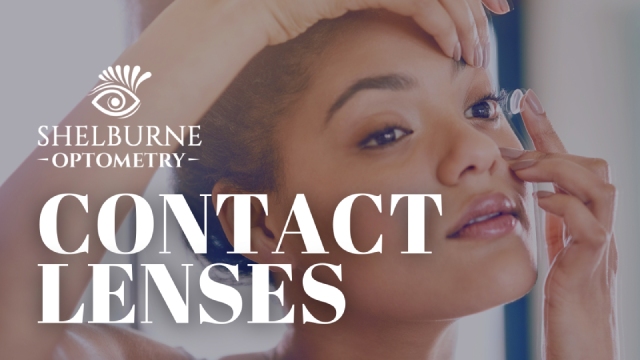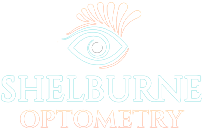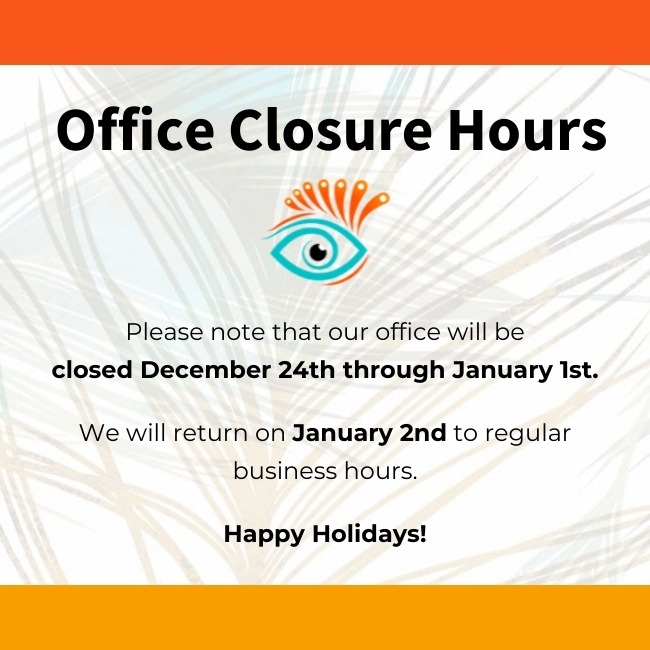The modern world has had many innovative developments: we can talk to our phones, cars and homes and they respond, we can order anything imaginable online and it arrives on our doorstep within hours… Convenience is the name of the game, and in the world of optometry, the progressive evolution of contact lenses continues to win.
What Are Contact Lenses?
Contacts are thin, curved ocular prosthetic devices that sit against the surface of your eye. They’re made of flexible plastic (hydrogel) or silicone polymers, depending on the type of contact lens (we’ll get into those later).
It’s important to note that Health Canada describes contact lenses as “medical devices that provide benefits while posing certain risks”. The United States Food and Drug Administration (US FDA) also classifies all contact lenses as medical devices. This is why it’s necessary to attend a contact lens consultation and fitting appointment to ensure the correct lenses are selected for your eye shape and vision needs. Sticking any old contact into your eye can have serious consequences if the fit is incorrect. Proper training is also needed to ensure you can handle the responsibility of contacts without giving yourself an infection (or worse, but we’ll get into all of that later as well).
How do they work?
Contacts are placed over the cornea at the front of the eye, with a layer of tear film between them (it’s actually the tear film the contact rests on). You may have thought the front of your eyes were a smooth, perfect curve (they’re called eyeballs after all), but the area at the front of your eye that protects your iris, pupil and lens actually protrudes a little, like a subtle “hump”. Contacts are designed to hug this little “hump”, which is why they’re able to stay in place and not slide willy-nilly ‘round your eye.
Contacts are predominantly used for refractive correction (improving vision), and allowing someone to function in their day-to-day without glasses. There are many reasons people go this route, from medical purposes to their glasses being a hindrance to their work (especially workers and athletes that are required to wear some kind of mask or face covering), to the joy of having one less thing to lose, and the freedom of wearing whichever sunglasses your little heart desires, no prescription lenses required. Whatever the reason, we’re often brought back to the glorious gift of convenience.
Interestingly, the beginning of our journey toward contact lenses didn’t seem to have much to do with convenience, and a lot more to do with “wouldn’t this be neat?”.
A History of Contact Lenses
The fascinating history of contact lenses is much longer than most people realise, and involves the talents of such characters as da Vinci and Descartes (though neither terribly successfully).
- 1508 – Leonardo da Vinci proposes submerging one’s face in a bowl of water, or wearing a glass hemisphere filled with water over one’s eye, as a way to explore accommodation methods (the eye’s natural ability to adjust itself to focus from distance to near). Neither was particularly practical, nor intended for refractive correction, but still, a seed was planted.
- 1636 – René Descartes, a French philosopher, suggests taking a glass tube filled with liquid and capped with a lens and placing it over the eye. This idea didn’t fly, however, when it was pointed out it would have to sit directly on the eye and thus make blinking impossible. Back to the drawing board.
- 1801 – Inspired by Descartes’ idea, Thomas Young, a British polymath, creates the first set of basic contact lenses. They were filled with water and held to his eyes with wax (yum). They effectively neutralised his refraction, which he then corrected using another set of lenses. Not ideal, but we were onto something.
- mid-1800s – Sir John Herschel, another British polymath, suggests a “spherical capsule of glass filled with animal jelly” (yum) or a “mould of the cornea” that could then be used on a transparent material. He never tested these ideas, but moulding the cornea seemed like a step in the right direction.
- 1888 – German ophthalmologist Adolf Fick fabricates the first afocal (not focused) scleral contact lens (a large lens we’ll chat more about below). The set was made from heavy blown-glass and rested mainly on the less-sensitive areas surrounding the cornea. He tested his design on rabbits, himself and eventually volunteers. They were large and awkward, and could only be worn for a couple of hours at a time. That same year, August Müller, a German medical student, created what he called corneal lenses that were lighter and better matched the curvature of the cornea. They were also difficult to wear, with volunteers lasting even less time than Fick’s, but Müller’s design became the basis for how we still fit contact lenses today.
- 1930s – The Dirty Thirties proved to be the decade contact lenses needed. Joseph Dallos, a Hungarian physician, perfected making moulds from living eyes in 1929, the better part of a decade after Herschel first pointed out it would probably be super helpful. Once this important technique was finally acquired, scleral contact lens fabrication leapt forward with the invention of poly (acrylic/plastic). American optometrist William Feinbloom introduced the first glass and plastic hybrid lens in 1936, and by 1937 it was estimated that around 3000 Americans were already wearing contact lenses. The first completely plastic contact was produced in 1939 by Hungarian ophthalmologist Dr. István Györffy. Over 430 years after da Vinci suggested looking through water, we got somewhere.
- 1948 – American optician Kevin Tuohy files a patent for the first corneal contact lens made entirely of poly, which was quite thick and blunt. While it wasn’t an ideal design in terms of comfort, we had finally managed to stumble upon the idea that covering the cornea only (i.e. making the lens smaller) was more ideal than the previous larger scleral lenses that covered much of the front of the eye.
- 1960s – Poly corneal contact lenses gain immense popularity, and American President Johnson becomes the first President in US history to appear on live television wearing contact lenses (under the close supervision of an optometrist). Contacts at this time were expensive and fragile, but we’d finally found what we were looking for.
- 1970s to Present – Up to the 70s, contacts were quite rigid and hard, and took time to adapt to before they could be worn comfortably. They also didn’t allow oxygen to pass through to reach the eye, which had various side effects. By the end of the 70s and throughout the 90s, softer contact lenses became available that allowed the eyes to breathe better during long-time wear. Firmer contacts were also adjusted to allow the flow of oxygen. The more comfortable contacts became, the more popular they became, and today we have contacts made of innovative materials capable of breathing easily and even maintaining moisture throughout the day.
Over half a millennium later, here we are. I think da Vinci would be proud.
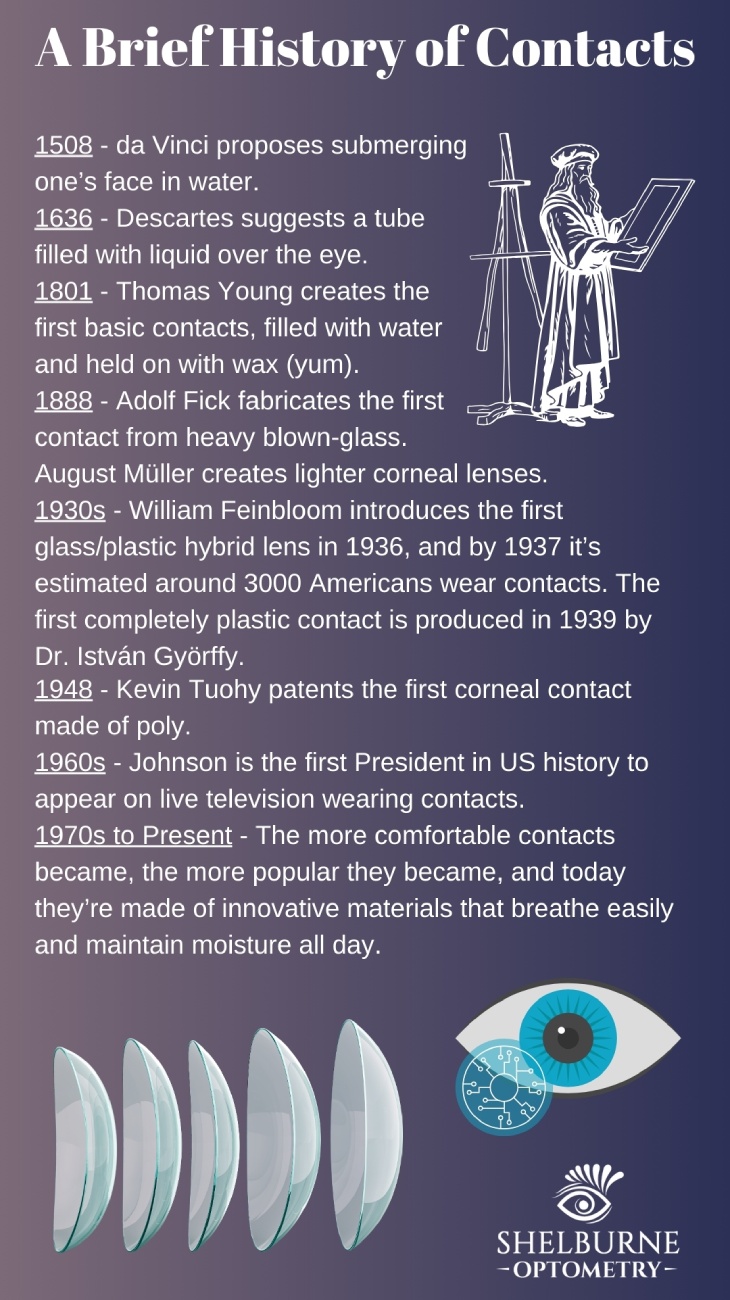
Contact Lenses Today
Refractive Correction Is still the most common use for contacts. They correct common refractive errors such as astigmatism (mismatched curvature of the cornea or lens of your eye), hyperopia (farsightedness), myopia (nearsightedness), and presbyopia (age-related farsightedness). But advancements in lens technology have allowed them to branch out into other areas, being of great use in both medical treatment and cosmetics.
Types of Contact Lenses
Cosmetic Contact Lenses – These are lenses that may or may not contain a prescription, but their main purpose is to change the appearance of your eyes. The most common use for these is changing eye colour, but they’re also used extensively in visual effects and costumes. These can be a lot of fun, but here’s what a lot of people don’t realise: you still need a prescription from an optometric professional to use them. You should never purchase contact lenses from anywhere that doesn’t require a prescription, such as costume shops and online retailers. I know come Halloween it’s wicked fun to pretend you’re another creature, but without proper training from an optometrist, you could be putting your eyes (and vision) at great risk. We’ll chat more about the risks in the next section of this post. Remember: in Canada contact lenses, whether prescription or purely cosmetic, are medical devices and must be prescribed by a medical professional. In the United States it’s actually illegal to sell contact lenses without a required prescription.
Daily Wear Contact Lenses – These are lenses that you wear during the day and remove before you go to bed (you never sleep in them). Some daily contacts are disposable, meaning you throw them away at the end of the day and bust out a fresh pair the next morning, and some are monthly, meaning you (gently) clean them before bed and keep them in a protective case overnight until they reach their recommended end of use (in this example, a month), at which time you would dispose of them and start a new pair.
Extended-Wear Contact Lenses – These lenses you can sleep in. They are worn day and night, usually for 30 days, and then disposed of. It’s highly advised that you sleep at least one night without them before you start a new set, to allow your eyes to rest. The wear length will vary depending on your eyes and the purpose of the lenses, but an optometrist will make it clear how you should proceed.
Gas Permeable (GP) Contact Lenses – Also known as Rigid Gas Permeable (RGP) Contact Lenses, these are made from silicone polymers and are harder than soft contact lenses. This makes it a little more difficult to adjust to wearing them, needing more time and patience to become comfortable. The upside of their material is they hold their shape better and are less fragile than soft lenses. They can also correct certain vision conditions with more clarity.
Hybrid Contact Lenses – These lenses are rigid in the centre, and soft around the edges. This allows you to adapt to wearing them comfortably in a shorter period of time than regular RGP contacts, while providing crisp, clear vision.
Multifocal Contact Lenses – Multifocal contacts are fascinating to me, even now, after five years of working in the optometry industry. Multifocal lenses correct distant and near vision at the same time. For example, if you need vision correction to see far away, but you also have age-related presbyopia (you’re struggling with up-close and reading), then multifocal lenses are ideal. With the advances in modern lens technology, someone can wear lenses with multiple powers embedded in them, to easily adjust from seeing far to reading close, without the need for glasses.
Orthokeratology (Ortho-K) Contact Lenses – These are hard lenses that are worn only during sleep, to reshape the cornea and correct refractive errors. An optometrist will advise how often you should wear them depending on your individual needs.
Soft Contact Lenses – These are made of a flexible plastic material that’s comfortable to wear and allows people to adjust to contacts much easier and much faster. They are also, however, fragile and can tear or rip if misused (or if you rub your eye too hard). I once had a soft contact lens split in the movie theatre, fifteen minutes into Kingdom of Heaven. The theatrical version of that movie is 2 hours and 24 minutes long. Should’ve brought my glasses. Shouldn’t have rubbed my eye. Learn from me, friends.
Toric Contact Lenses – These are for correcting astigmatism in patients. They contain two powers, one to correct the distance or near vision, and one to correct the astigmatism.
Transitions Contact Lenses – These are exactly what they sound like, and I’m not gonna lie, watching them activate gives me a hint of the heebie jeebies. Lens technology is a wild thing. These are contact lenses that go dark (like sunglasses) when exposed to UV light (i.e. the Sun). Sounds awesome, right? Definitely, undeniably, a very cool scientific achievement. However. In my humble, little blogger opinion, watching someone’s eyes suddenly transform into all black makes it look a bit like they’re being possessed. But hey! You may also find that wicked cool.
Scleral Contact Lenses – These were the lenses that really got the contact lens ball rolling in the late 1800s. They’re a form of RGP lens that are larger than what we now consider regular contacts. They cover the cornea, but their edges rest on the sclera (the white part of your eye) surrounding the cornea. This creates a small gap between the cornea and the lens itself, which allows your cornea to remain lubricated throughout the day. For this reason, scleral contacts are great for patients who suffer from Dry Eye Disease, as well as other conditions that affect the cornea.
With Great Vision Comes Great Responsibility
As we’ve mentioned, contacts are medical devices that require care and attention to use correctly. You know we’re not big on risking your vision, and that’s exactly what you’re doing if you start dabbling in contact lenses without proper training and awareness. With Halloween just around the corner, we know temptation lurks among the costume racks, but please be aware of the genuine risk you pose to yourself when you decide to skip the prescription.
Let’s talk about some Pros and Cons of contact lens wear.
Pros
- Available in most prescriptions
- Comfortable to wear
- Convenient
- Correction for most refractive errors, corneal therapy and myopia control
- Crisp vision without the need for glasses
- Daily disposable lenses are good for eye health and hygiene
- Easy to clean
- Easy to insert and remove (with training)
- Easy to travel with
- Extended-wear contacts can be worn up to a week or even a month
- Fun way to change up your eye colour or appearance
- Freedom to wear any sunglasses your little heart desires
- Handy for special occasions and events when you don’t want to be photographed wearing glasses
- Move with your eye creating less distortions and allowing a more natural field of view
- Multifocal options
- Relatively easy adaptation period
- Remove the need for glasses in sports and physical activities, or occupations where having glasses can create a hazard or interfere with personal protective equipment
Cons
- Don’t correct all vision issues and aren’t always available in all prescriptions (especially much higher, myopic prescriptions)
- Extended-Wear lenses require regular monitoring and follow-ups, and have increased risk of infections and complications if not cared for properly
- Must be cleaned and stored properly to avoid risks, infections and complications
- Must follow replacement schedule carefully to avoid overwear and eye risks
- Proper training is needed to ensure you can safely insert, remove, clean and store your contact lenses before you can be permitted to use them on your own
- Rigid Gas-Permeable (RGP) lenses are very uncomfortable if something (such as dust, dirt, an eyelash, etc.) gets caught underneath them, they can move around the eye easier than softer lenses, they need consistent wear to maintain their comfort and can require more frequent follow-up visits with your optometrist
- Soft lenses can be tricky to get the hang of as they’re lighter and more slippery than RGP lenses, they’re also more fragile and need to be handled with care
Complications and conditions that can be caused by improper contact lens hygiene, care and wear include:
- Contact-Lens-Induced Acute Red Eye (CLARE) – This occurs when you don’t respect your wear schedule and keep your contacts in longer than advised, or use them past their required replacement time. It causes your eyes to become red and irritated, which can be very uncomfortable.
- Corneal Abrasion – This occurs when the cornea becomes scratched, possibly from improper lens care, debris under the contact, rubbing your eyes with the contacts in, etc. Most often a corneal abrasion will heal on its own though your optometrist may prescribe drops to help the process feel more comfortable.
- Corneal Inflammation – Also known as Keratitis, this occurs from lenses that have been worn too long or haven’t been cleaned properly. It can lead to infection if not treated promptly.
- Corneal Ulcer – This is not fun. This occurs when there is damage to the cornea (such as an abrasion) that becomes infected and creates an open sore (an ulcer). This is considered a medical emergency and must be addressed as soon as possible, as delays and severe cases may lead to permanent vision loss.
- Dry Eye Disease – This can occur if you don’t carefully follow your contacts’ wear-time schedule or properly lubricate your eyes or contacts. In fact, if you already have dry eyes, your optometrist likely won’t recommend contacts until this is under control, to avoid creating further discomfort and risks for your eyes.
- Giant Papillary Conjunctivitis (GPC) – This occurs if you have allergies to your contact lenses or their solution chemicals, by friction of the lenses rubbing against the inside of your eyelids (especially if debris of any kind is present on the lens), or deposits of proteins (or other things that shouldn’t be present on your contacts). It causes irritation, redness and swelling on the inside of your eyelid, and can sometimes form clusters of small bumps. It’s quite uncomfortable and you’ll need to stop wearing contact lenses for several weeks while your eyes recover.
- Microbial Keratitis – This occurs if you leave your contacts in too long or don’t clean them properly. It’s rare but serious, causing an infection on your cornea that can lead to actual damage. It needs to be treated immediately to avoid the infection worsening, with extreme cases leading to blindness or requiring an actual corneal transplant.
These are just some of the issues that can arise from improper contact lens use (and blinding examples of why proper training and care is needed before using contact lenses). Many of these issues can also be caused by wearing contacts that are not suited to your eye shape (i.e. sticking any old lens in your eye without the guidance and proper fitting of an optometrist). You may have noticed a lot of these complications link back to wear-time and hygiene. If you want to bask in the convenience of contact lenses, you need to respect that they are, in fact, medical devices, and be responsible with their care.
Tips to Avoid Complications and Infections
- Do not get water in your eyes
- Follow your lenses’ replacement schedule carefully
- Keep your contacts and their storage case clean
- Never use water or saliva to clean your contacts or case, or to replace your contacts throughout the day (you animal)
- Remove your contacts before bed if they’re not approved for overnight use (never sleep in contacts that are not designed for overnight wear)
- Wash your hands before touching your contacts or eyes
A Note About Purchasing Contacts Online
We began this post pointing out the epic convenience of contact lenses. The most recent evolution of this convenience is one’s ability to simply purchase contacts online. Many people do this without the guidance of an optometric professional (i.e. an optician or optometrist), and it can have disastrous results.
Optometry offices offer contact lens fitting appointments for many reasons. The first of which is because not all contacts will be suited to your unique eyeballs, let alone those eyeballs’ unique needs. As with everything else in the human body, our eyes are not a “one size fits all” situation. This is why contacts are considered medical devices, and why the United States deemed it illegal to purchase them without proof of a prescription. This is the only way to show that a qualified medical eye care professional performed a proper fitting for you and approved the lenses for you to wear.
Obtaining lenses of any kind without a proper prescription, fitting and training, can result in serious complications such as infections or even vision loss (feel free to read that list above again if you think looking like a cat for six hours is worth it). Even if you just want them for Halloween, book a fit and training appointment with your optometrist to ensure you’re being responsible and protecting your eyes (and vision).
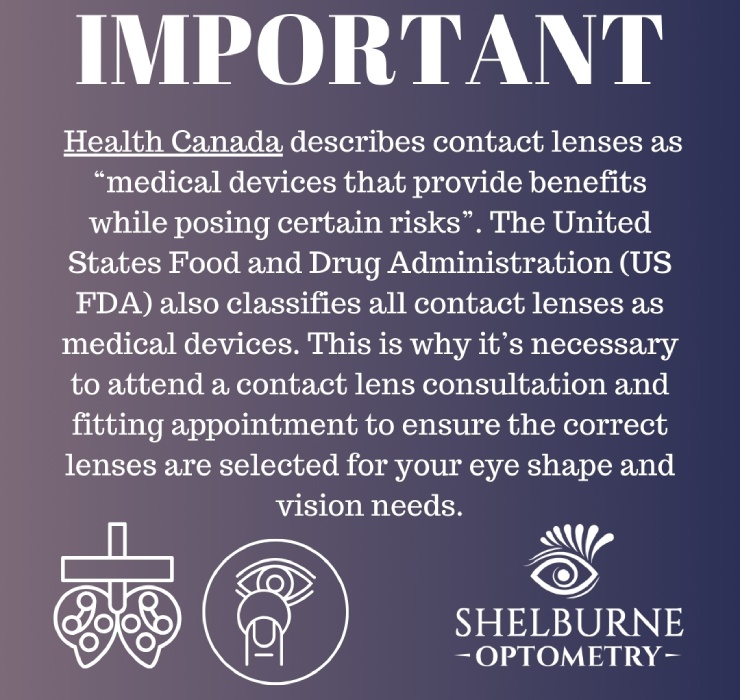
Final Thoughts
This was a lot of information about contact lenses, but all of it was important. Contact lenses have soared in popularity over the past few decades, and as technologies continue to advance, more and more interest develops every day.
While convenience is the name of the game, there is also a lot of responsibility involved in being a contact-lens-wearer. I promise you it is not worth the pain and discomfort (not to mention insane risk) to not take contact lenses seriously. Hygiene and wear schedule are of the utmost importance, second only to the actual fitting and approval process by your optometrist.
If you made it this far, you are an absolute champion. And if reading this inspired you to look into the possibility of contact lenses for yourself, be sure to contact your optometrist to book a fit and training appointment, or simply bring it up at your next exam and they’ll get you all sorted.
My advice if you do end up in contact lenses? Celebrate with a nice new fancy pair of sunglasses. 😎
Wishing you all the best in wherever your path takes you today,
Sydney
Sydney Gallant, CCOA
Virtual Clinic Assistant
Shelburne Optometry


